Transforming Your Yard: A Step-by-Step Guide to Landscape Design
- June 11, 2024
- 0 comment
Has designing the perfect yard got you stumped? Worry not! We’re here to provide you with practical tips to develop a landscape plan that will make your property the talk of the neighborhood. Whether you’re aiming for a spot for lively dinner parties, a play area for kids and pets, or a tranquil retreat to unwind, our guide will help you achieve your landscaping goals.
1. Getting Started with Your Landscape Plan
Start your landscape project by sketching a simple map of your yard. Include permanent features like big trees and hills. Mark areas that get a lot of sun, some shade, or are mostly shady, and note spots where you want more privacy.

Make at least three copies of this map or use tracing paper to try out different layouts easily. As you plan, think about what you need now and what you might want in the future—like spaces for hosting large groups, areas for kids to play, or a quiet corner for relaxing. This first step helps you see all the possibilities for your yard and plan them in a way that fits your life.
2. Designing with Purpose and Style
When designing your yard, begin by placing the largest features, such as patios, decks, or pergolas. Position these key elements thoughtfully, then fill in the smaller details around them, always considering your budget. Make sure your outdoor space reflects the style of your home’s interior to create a unified look.
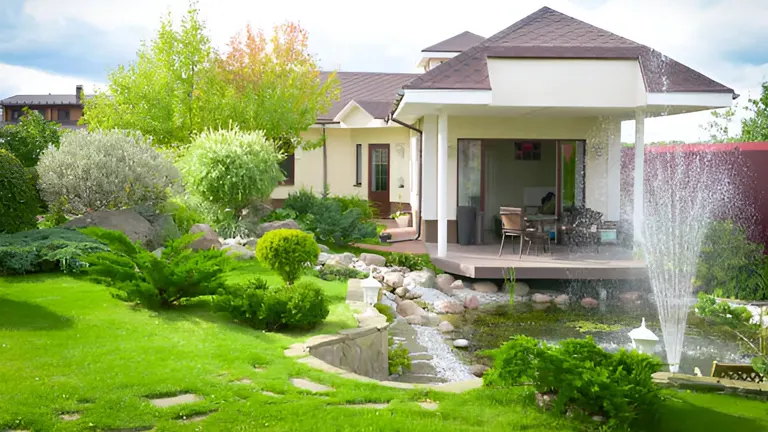
For instance, a traditional house may blend well with a variety of landscaping styles, from formal gardens to casual outdoor spaces, while a modern home often works best with simple, clean lines and minimalistic plantings like ornamental grasses. This approach ensures that your landscape is not only functional but also aesthetically pleasing, making it a true extension of your home.
3. Choosing and Placing Plants
Plants play a vital role in shaping the aesthetic and atmosphere of your landscape. For a structured look, use clean-lined beds to define distinct areas within your garden, or opt for curved plantings to achieve a more natural, flowing appearance. When selecting plants, it’s important to consider their full-grown sizes to ensure they won’t block any views in the future.
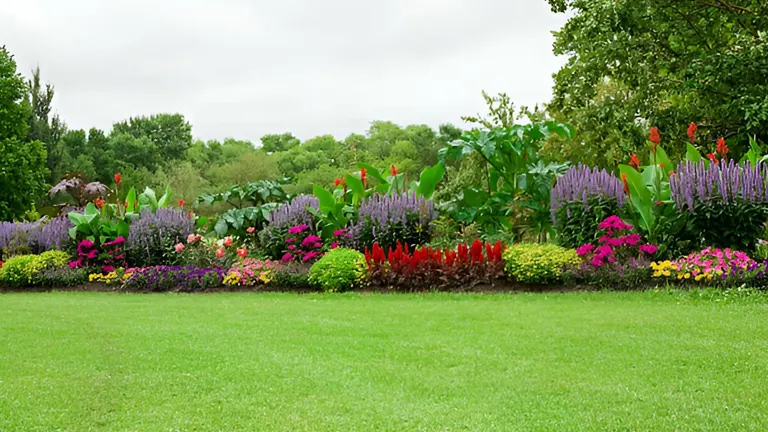
Stick to a cohesive color palette to maintain harmony and limit color variation in compact areas. Planting in odd numbers is visually appealing and can create balance and interest. If you need privacy, think about adding hedges or installing a stylish fence, but make sure to first check any local regulations that may apply. This thoughtful approach to choosing and placing plants will enhance both the functionality and beauty of your outdoor space.
4. Building Pathways and Adding Features
Pathways are essential for linking different areas of your garden and can greatly influence its style. Choose materials like solid concrete or pavers for a formal appearance, or go for crushed gravel and stepping stones to create a softer, more natural vibe.
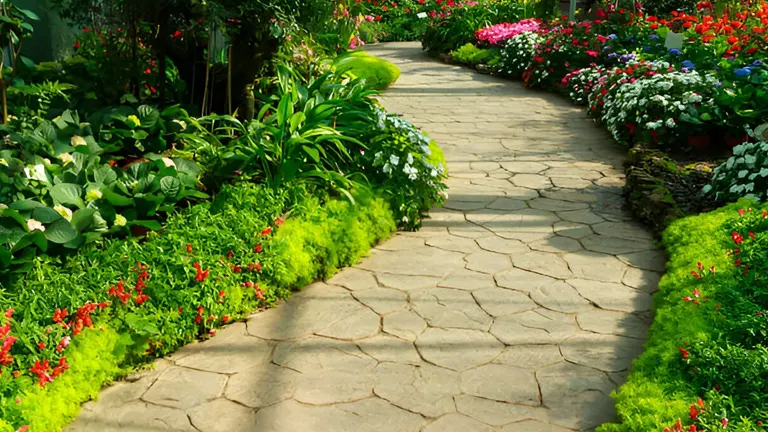
When laying out stepping stones, arrange them to align with a natural walking stride and incorporate landings where visitors can pause and enjoy the scenery. Consider adding a water feature such as a small pond or fountain to your landscape. Not only do water features enhance the tranquility of your space, but they also help drown out background noise, making your garden a peaceful retreat.
5. Illumination and Maintenance
As your landscape design comes to life, consider the role of lighting in enhancing your garden’s beauty after sunset. Strategically placed uplights can dramatize tree silhouettes, while floodlights illuminate flower beds, and path lights add safety and charm to walkways, turning your garden into an inviting nighttime sanctuary.

Equally important is planning for the ongoing maintenance that your landscape will require. Evaluate how much time you are willing to dedicate to upkeep and choose plants and features that align with your lifestyle. This approach ensures that your garden not only looks great but is also manageable, allowing you to enjoy a beautiful outdoor space that fits your daily life.
Eco-Friendly Practices in Landscape Design
Adopting eco-friendly practices in your landscape design not only enhances the beauty of your outdoor space but also contributes to environmental sustainability. Here are key strategies to make your garden more eco-friendly, along with their benefits:
- Using Native Plants: Incorporating native plants into your landscape is one of the most effective ways to promote biodiversity and sustainability. Native species are adapted to the local climate and soil conditions, which means they require less water, fewer fertilizers, and fewer pesticides to thrive. This not only reduces your garden’s resource consumption but also supports local wildlife, providing habitats for birds, bees, and butterflies.
- Installing Rain Gardens: Rain gardens are shallow depressions planted with native shrubs, perennials, and flowers positioned to capture runoff from impervious surfaces like roofs and driveways. They help manage water runoff, reduce erosion, and filter out pollutants before they reach waterways. Rain gardens are not only functional but also attractive features that enhance the natural aesthetics of your landscape.
- Implementing Water-Efficient Irrigation Systems: To minimize water waste, consider installing drip irrigation systems or soaker hoses that deliver water directly to the plant’s roots, where it’s needed most. Smart irrigation controllers can be programmed to water your garden based on weather conditions and soil moisture levels, ensuring that plants get the right amount of water at the right time. These systems help conserve water and reduce the cost of your utility bills.
- Mulching: Applying mulch to garden beds helps retain soil moisture, suppress weeds, and prevent erosion. Organic mulches like wood chips or straw decompose over time, adding valuable organic matter to the soil and improving its structure. This not only keeps your plants healthy but also reduces the need for chemical fertilizers.
- Composting: Composting kitchen scraps and yard waste reduces landfill waste and provides you with rich organic material that can enhance soil fertility naturally. This practice supports a sustainable garden ecosystem by recycling nutrients back into the soil.
- Permeable Paving: Instead of traditional concrete or asphalt, consider using permeable paving materials such as gravel, pebbles, or permeable pavers for walkways and patios. These materials allow rainwater to seep through and recharge groundwater rather than running off into drains, helping to manage stormwater effectively and reduce the risk of flooding.
By integrating these eco-friendly practices into your landscape design, you not only create a more sustainable and low-maintenance garden but also contribute positively to the environment. These practices help ensure that your outdoor space remains beautiful, functional, and environmentally responsible for years to come.
Technology in Landscape Design and Maintenance
Integrating modern technology into landscape design and maintenance can significantly enhance the efficiency and effectiveness of your gardening efforts. Here are some innovative tools and technologies that can help you optimize your outdoor space:
- Landscape Design Software: Programs like AutoCAD, SketchUp, and VizTerra offer powerful tools for visualizing and planning your landscape down to the last detail. These software solutions allow you to create a virtual model of your yard, experiment with different layouts, and see how various plants and features will look through the seasons.
- Gardening Apps: Mobile apps such as iScape, My Garden, and PlantSnap can be invaluable for both novice and experienced gardeners. These apps can provide plant identification, care tips, and even augmented reality features to visualize plants in your space before making any changes.
- Smart Irrigation Systems: With advancements in smart home technology, irrigation systems have also seen significant improvements. Devices like the Rachio Smart Sprinkler Controller adjust watering schedules based on local weather forecasts, soil conditions, and plant types. This not only saves water but also ensures that your plants receive the optimal amount of moisture at the right times.
- Drone Technology: For larger properties, drones equipped with cameras can offer a bird’s-eye view, making it easier to plan, monitor, and maintain landscapes. Drones can be used to assess plant health, monitor irrigation, and even track the growth of plants over time.
- Sensor Technology: Soil sensors and environmental monitoring systems can provide real-time data on soil moisture, temperature, and nutrient levels. This information can be crucial for making informed decisions about watering, fertilizing, and planting, helping to maintain the health and beauty of your garden without guesswork.
Conclusion: Bringing Your Vision to Life
Finally, take a trip to your local store to identify the best plants and flowers for your area. Remember, the key to great landscaping is to do what makes you happy. With this comprehensive guide, you’re ready to create an outdoor space that not only meets your functional needs but also reflects your personal style and becomes a perfect backdrop for making memories.
FAQs
- How do I start planning my landscape design?
Begin by assessing your current yard, noting key features such as existing plants, sun exposure, and elevation changes. Sketch a basic layout and identify your needs and wants, like entertainment spaces or play areas. This initial plan will serve as the foundation for your design. - What should I consider when choosing plants for my landscape?
Consider the climate, soil type, sun exposure, and water requirements of your area. Choose plants that thrive in your local conditions to ensure growth and sustainability. Also, think about the mature size of the plants to avoid overcrowding and to maintain visibility and aesthetics. - How can I make my landscape design eco-friendly?
Use native plants that are adapted to your local environment, requiring less water and care. Incorporate rain gardens to manage stormwater runoff and consider permeable paving to reduce erosion and increase groundwater recharge. - What are some budget-friendly landscaping ideas?
Opt for projects that can be completed in phases, use mulch to reduce water usage and minimize weeds, and repurpose materials like pallets for garden beds or pathways. Also, consider growing plants from seeds or cuttings instead of buying mature plants. - How do I maintain my new landscape?
Regular maintenance such as pruning, weeding, and watering is essential. Set a routine that matches the needs of your plants and the seasons. Consider using mulch to help retain soil moisture and reduce weed growth. - How important is irrigation in landscape design?
Proper irrigation is crucial, especially in drier climates. Consider installing drip irrigation systems for efficient water use. These systems deliver water directly to the base of the plant, reducing waste and ensuring plants receive the necessary hydration. - Can I design a landscape that requires minimal maintenance?
Yes, focus on selecting drought-resistant plants, using mulch to reduce water loss, and installing hardscaping elements like rocks or gravel that require little to no upkeep compared to grassy areas. - What are the best features to enhance the aesthetics of my landscape?
Water features, decorative stones, lighting, and garden sculptures can add visual interest and a personal touch to your landscape. Choose features that complement the overall style of your home and garden. - How do I handle landscaping in a sloped yard?
Terracing or installing retaining walls can create usable flat areas for planting or other garden features. Slopes can also be utilized for natural water features or rock gardens. - What should I do if I have limited space for landscaping?
Vertical gardening, container gardening, and using multi-functional outdoor furniture are excellent options for small spaces. Choose plants that can be grown upward like vines or that don’t require much horizontal space.
We hope this guide has inspired you to start your landscape design journey and create a yard that’s not only beautiful but a perfect fit for your lifestyle. Do you have any more questions or unique ideas you’d like to share? Drop us a comment below—we’d love to hear how you’re planning to spruce up your outdoor space. And if you found these tips helpful, don’t hesitate to share this article with your friends and family. Let’s spread the joy of beautiful, functional yards together!

Charles Hayes
Forestry AuthorI'm Charles Hayes, I bring over 15 years of specialized expertise in landscaping and woodworking, blending artistic design with sustainable environmental stewardship. My career, fueled by a profound passion for the natural world, encompasses extensive education and hands-on experience in creating harmonious, eco-friendly outdoor spaces and responsibly managing forest resources. Recognized for my professional standing, I am committed to continuous learning and certification in cutting-edge practices. My expertise is not only reflected in my work but also in my contributions to community projects, educational workshops, and collaborations with industry leaders. As an authoritative voice in my field, I strive to share knowledge and promote environmentally conscious approaches, making me a trusted resource in landscaping and forestry.

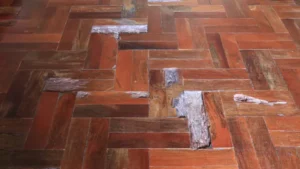







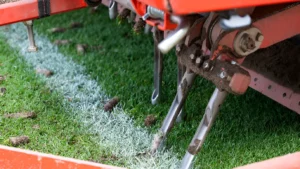

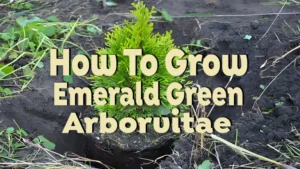

Leave your comment